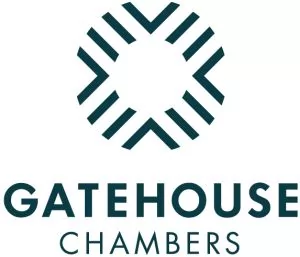Dispute Resolution analysis: In an usual case, the Court has granted a Claimant late permission to amend its pleading to introduce fresh pleas of forgery against the Defendant. To mitigate the impact on the Defendant, the Court limited the instances of forgery upon which the Claimant could rely by number and permitted the Defendant to respond to them by way of evidence in reply.
Crypto Open Patent Alliance v Wright [2023] EWHC 2642 (Ch)
What are the practical implications of this case?
This judgment highlights a common issue faced in claims concerning and/or involving allegations of fraud and forgery. The Claimant bears a significant burden in terms of adequately pleading and proving such allegations. However, the circumstances of the fraud or forgery may make it unusually difficult to discharge that burden. The issue arose in this case because, following disclosure, the Claimant sought to introduce a swathe of fresh allegations of forgery against the Defendant. Introducing those allegations at such a late stage necessarily involved a late amendment to the pleading and one which had the potential to impose so significantly upon the Defendant in producing a response that a trial date would be jeopardised. The centrality of the allegations to the core claim being advanced was such that it would be unjust not to permit the Claimant to pursue these fresh allegations of forgery against the Defendant. However, if those allegations were all permitted to be advanced in proper form and the Defendant was given a due opportunity to respond to them, a trial date would be lost. The Court crafted a solution, drawn from a case in a different field of practice, which differed from the position taken by either party, effectively capping the number of allegations of forgery which could be raised and forcing the Claimant to pick its best examples to prove its argument. This solution meant that the trial could still proceed as listed and the overriding objective could be maintained in what were challenging circumstances.
What was the background?
Two sets of proceedings are relevant to this judgment. In the first (the "COPA Claim"), the Crypto Open Patent Alliance ("COPA") seeks to prove that Dr Craig Wright is not the author of a document known as the Bitcoin White Paper and is not the person who adopted more generally the pseudonym, Satoshi Nakamoto. In the other, Dr Wright seeks to prove that he was Satoshi Nakamoto. At a trial in January 2024, this "Identity Issue", common to the two sets of proceedings, is to be determined. COPA applied to amend their Particulars of Claim in advance of that hearing in order to add in three paragraphs. The first two of those paragraphs included allegations of wholescale forgery of documents which they say clarify its pleaded case and do no more than restate its existing position adding in instances taken from expert evidence in the proceedings. The third paragraph introduces a plea of similar fact evidence based on what is said to be Dr Wright's 'history of plagiarism'. The application to amend the Particulars of Claim was resisted by Dr Wright. He argued that prior to the amendments, this was not really a case about forgery, save that there were pleas only in relation to forgery of a handful of documents. The amendments now seek to put in issue the forgery of approximately 400 documents. Dr Wright also argued that the amendments are not a proper pleading of forgery and fall foul of the principles relating to pleading fraud.
What did the court decide?
The Judge commented that whilst there was force in the arguments on both sides, he felt that each had come to adopt somewhat extreme positions and that the correct answer lay somewhere between the two extremes. During pre-reading, the Court had been attracted by the approach taken in an earlier passing off case in which the Claimant had been directed to advance its best 20 instances of alleged confusion at trial. Broadly following this approach, the Court unusually gave permission to COPA to amend in a form which is not before the Court. COPA was permitted to plead forgery of a total of 50 additional documents. It was for COPA to identify those documents. In coming to this position, the Court was mindful that the amendments were late, however, an amendment in some form to add further allegations of forgery was always in contemplation since at least the CCMC. The character and detail of the amendment was, however, at least to some extent, dependent upon the disclosure to be provided by Dr Wright. The Court did not accept Dr Wright's primary position that the amendments were unnecessary. They represent the essential core of COPA's case that Dr Wright's claim to be Satoshi Nakamoto is fraudulent and the documents he relies upon in support of that claim have been forged. By limiting the scope of the amendment to a finite number of documents, the Court felt able to ensure that the amendments would not jeopardise the trial date or cause any significant additional prejudice to Dr Wright. To further mitigate the impact on Dr Wright, the Court proposed that he be permitted to address the pleas added in by amendment in his witness evidence in reply rather than in an amended statement of case. Permission to amend to add in the similar fact evidence plea was refused on the basis that the probative value of that plea was so slight.
Case details
- Court: Business and Property Courts, Intellectual Property List
- Judge: Mr Justice Mellor
- Date of judgment: 24 October 2023
Article by Phillip Patterson – first published by LexisNexis
The content of this article is intended to provide a general guide to the subject matter. Specialist advice should be sought about your specific circumstances.


